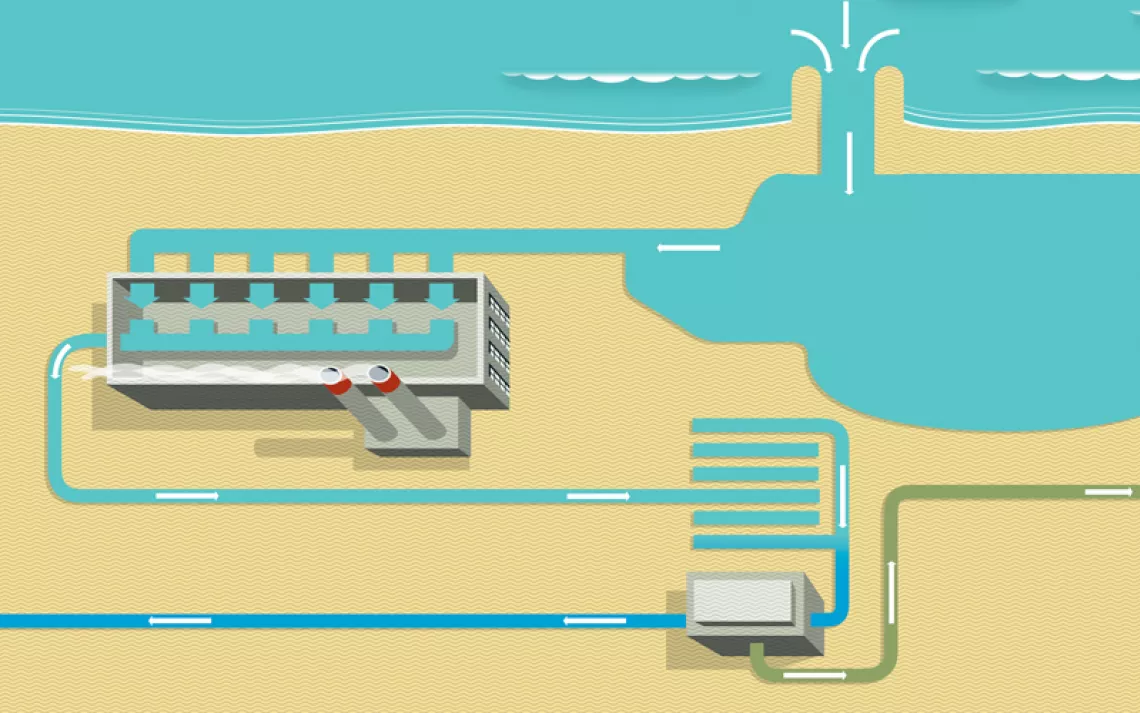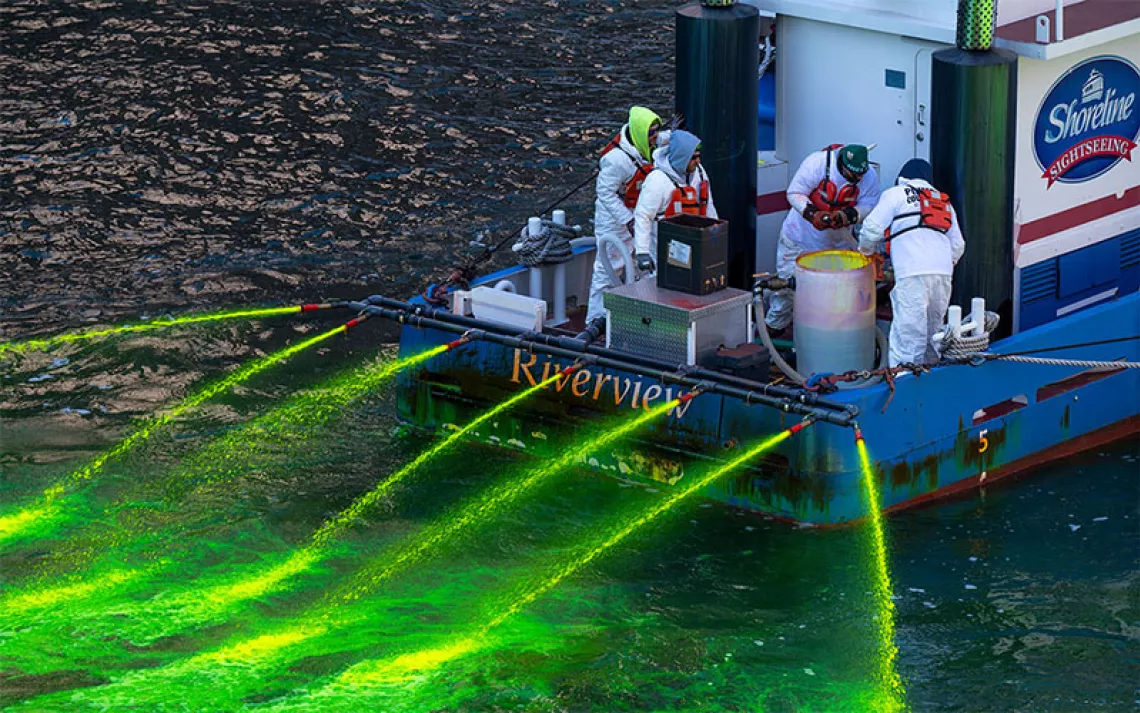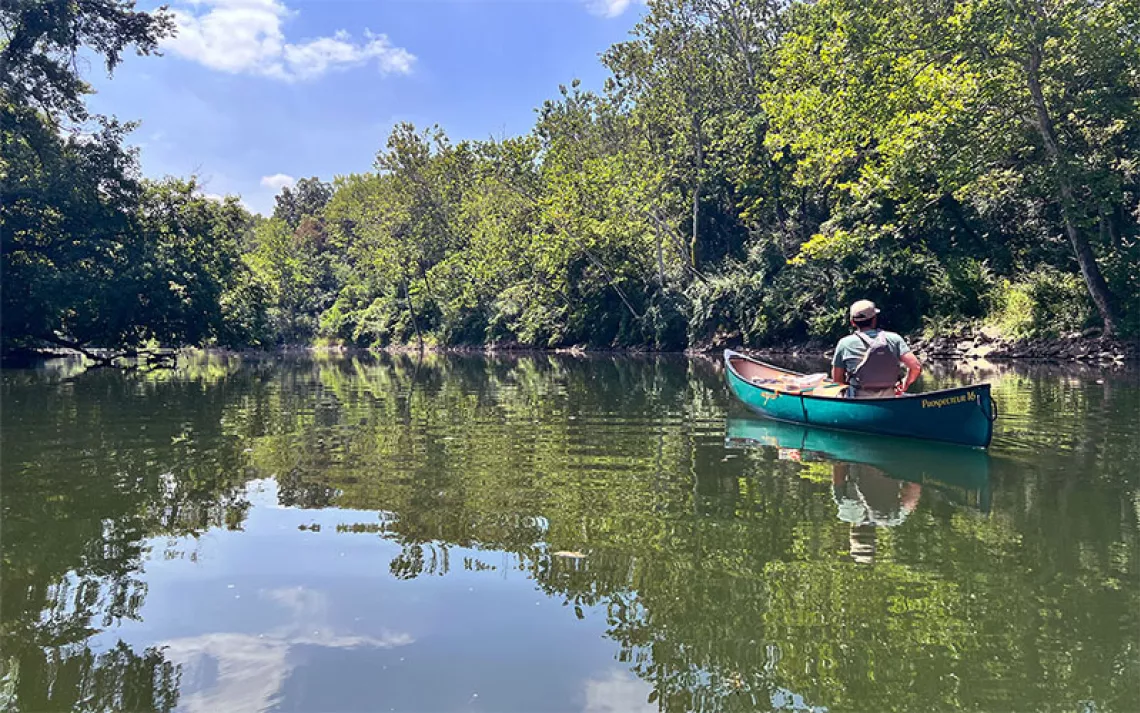Ghost Gear Haunts the World’s Oceans

Photo by Simon Dannhauer/iStock
It is not only humans who cleanse the world’s oceans of fish. Under the waves is the enormous, unregulated ghost-gear fishery—the millions of tons of traps, nets, and fishing lines lost at sea and gone rogue. They may have been lost in a storm or through an accident—cut by a boat’s propeller, or a worn-out line breaking. In some instances, they are purposefully abandoned by illegal fishers.
The issue has traditionally been treated as a regional or national problem. In 2015, however, a Global Ghost Gear Initiative was launched to coordinate reporting on the problem and cleaning up the oceans.
According to Elizabeth Hogan, the U.S. oceans and wildlife campaign manager at World Animal Protection—a founding participant of the initiative—640,000 tons of ghost gear is hauled out of the water each year.
“An awful lot of effort in the last few years has gone into removing ghost gear from different locations where it’s known to pile up in ‘hot spots’,” Hogan says. Hot spots develop due to rich fisheries, ocean currents, and/or weather-related events. In U.S. waters, ghost gear removal is led by the National Oceanic and Atmospheric Administration’s marine debris program.
“Some areas get more than their fair share,” Hogan says. “The biggest one is in Hawaii. They remove close to 60 tons of gear every single year from the same spot.” Since Hawaii doesn’t have a net-fishery, much of this ghost gear travels across the Pacific from those waters where nets are used.
The Global Ghost Gear Initiative is not a blame game. The vast majority of commercial fishermen, whether self-employed or crew on factory ships, don’t want any part of this destruction. It’s not good for the oceans, the fisheries, or the fishers themselves, since losing gear is expensive. “Fishermen make the connection of environmental harm that can come from lost gear and pollution on the species they fish,” says Maria Recchia, executive director of the Fundy North Fishermen’s Association, based in St. Andrews, New Brunswick. “And our guys are thinking in generations. They want their kids and grandkids to do it, so the last thing they want to do is harm the ecosystem or the species they fish for.”
The Fundy association has a history of retrieving ghost gear. Between 2008 and 2015, working in Saint John Harbour and a body of water known as Head Harbour Passage, its members retrieved 1,000 derelict lobster traps, 14.7 miles of rope, 756 yards of cable, 76 buoys, a stainless-steel diving platform, a ship’s anchor, and numerous other items that present a hazard to marine life and fishery.
All species are at risk. While a whale isn’t about to swim inside a lobster pot, Hogan says the collective weight of 10 to 25 pots strung together with plastic rope can prevent a whale from surfacing to breathe. If the whale does manage to surface, the weight of the entangled gear can cut into muscle, sever arteries, or wrap around a fin or flipper so badly that eventually the tissue becomes necrotic and the fin or flipper falls off. “The injuries can be pretty bad, and the animal lives in pain for a very long time.”
In addition to the pain and suffering inflicted on sea creatures is the substantial economic loss. Hogan estimates that ghost fishing takes from 5 to 15 percent of the world’s annual fishery catch, making it even more damaging than illegal fishing.
On the upside, she says, there’s little resistance to the ghost gear initiative: “It’s something people can see the logic of.”
There’s room for the public to help. When on or by the water, people can report lost gear and report its location via a map on worldanimalprotection.org. If you can safely remove the gear from the water, do so, but no heroics are necessary. If you find gear on a shore, move it beyond the tide line so that it doesn’t go back to its deadly work.
 The Magazine of The Sierra Club
The Magazine of The Sierra Club



